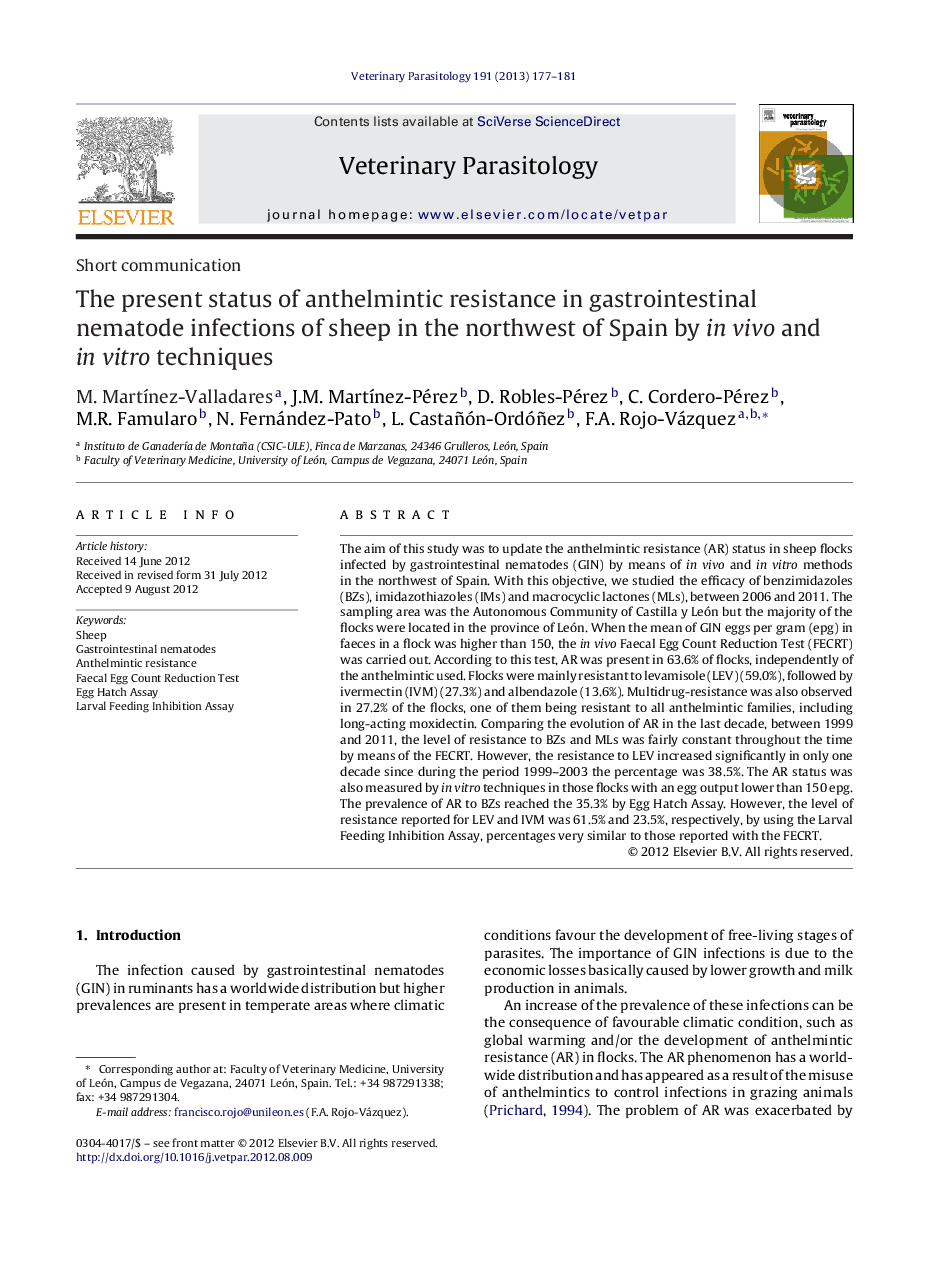| کد مقاله | کد نشریه | سال انتشار | مقاله انگلیسی | نسخه تمام متن |
|---|---|---|---|---|
| 5804418 | 1555706 | 2013 | 5 صفحه PDF | دانلود رایگان |

The aim of this study was to update the anthelmintic resistance (AR) status in sheep flocks infected by gastrointestinal nematodes (GIN) by means of in vivo and in vitro methods in the northwest of Spain. With this objective, we studied the efficacy of benzimidazoles (BZs), imidazothiazoles (IMs) and macrocyclic lactones (MLs), between 2006 and 2011. The sampling area was the Autonomous Community of Castilla y León but the majority of the flocks were located in the province of León. When the mean of GIN eggs per gram (epg) in faeces in a flock was higher than 150, the in vivo Faecal Egg Count Reduction Test (FECRT) was carried out. According to this test, AR was present in 63.6% of flocks, independently of the anthelmintic used. Flocks were mainly resistant to levamisole (LEV) (59.0%), followed by ivermectin (IVM) (27.3%) and albendazole (13.6%). Multidrug-resistance was also observed in 27.2% of the flocks, one of them being resistant to all anthelmintic families, including long-acting moxidectin. Comparing the evolution of AR in the last decade, between 1999 and 2011, the level of resistance to BZs and MLs was fairly constant throughout the time by means of the FECRT. However, the resistance to LEV increased significantly in only one decade since during the period 1999-2003 the percentage was 38.5%. The AR status was also measured by in vitro techniques in those flocks with an egg output lower than 150 epg. The prevalence of AR to BZs reached the 35.3% by Egg Hatch Assay. However, the level of resistance reported for LEV and IVM was 61.5% and 23.5%, respectively, by using the Larval Feeding Inhibition Assay, percentages very similar to those reported with the FECRT.
Journal: Veterinary Parasitology - Volume 191, Issues 1â2, 16 January 2013, Pages 177-181